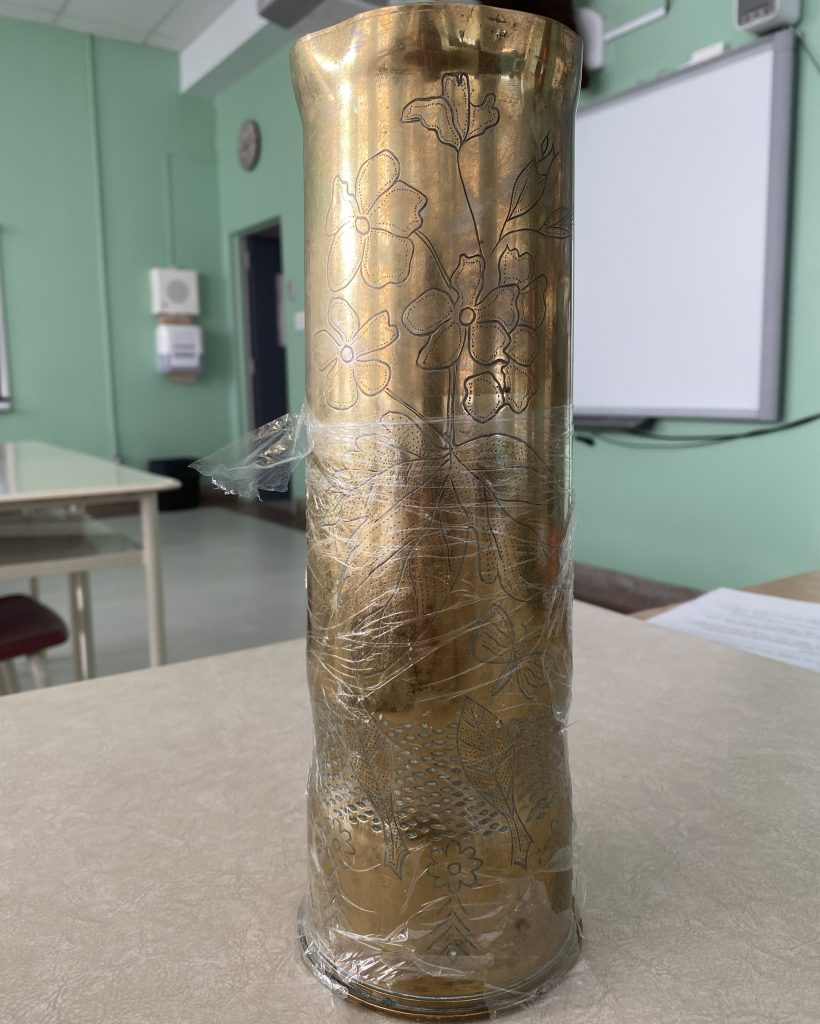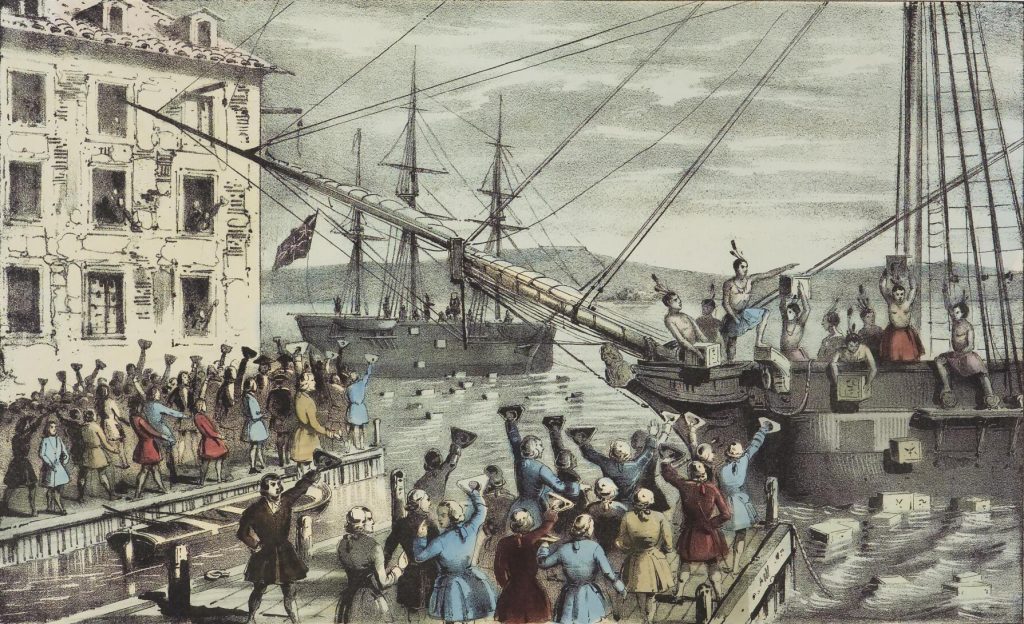Michael Scholes,
History Teacher
Michael teaches history to grade 7-11 students and has been teaching for 17 years. He teaches at Shawinigan High School, a public school in Shawinigan, Quebec. Michael teaches at a small K-12 English-speaking school in the predominantly Francophone community of Shawinigan, which is located approximately 160 kilometers from Montreal. Located on the Saint-Maurice River, it had a population of 49,620 as of the 2021 Canadian census. Michael explained that the community faces several challenges. Most students come from single parent families and many students have learning disabilities. Over the past fifteen years he has gotten to know his students very well. “I see the kids everywhere. I’m the basketball coach, I run after school activities, these kids are with me from nine in the morning to seven at night, almost every day of the week.”

Shawinigan High School
Shawinigan, Quebec

Curriculum & Resources
Michael has found a unique way to engage his students using a particular historic artifact.
Upon the retirement of the school’s only other history teacher, he was given a World War I artillery shell from the retired teacher’s grandfather, who fought in the war. The shell has some unique characteristics including, “many engravings, it’s covered in flowers and it’s engraved all over.” The shell is displayed in Michael’s classroom, but students have to wait until grade 11 to learn its unique story. “I have to find a way to bring them in. So, when they start seeing it hung up behind my desk for years, they always ask, ‘Sir, can we talk about it?’ I’m always like, ‘well, you got to wait for this particular course.’ So, it brings them in. They’re excited.”
The shell helps bring Canadian History alive for his students. Even though the war took place over 100 years ago, Michael explains that it is still a pivotal event in our history. What makes Michael’s artillery shell unique is that it was engraved by soldiers in 1918. The shell is presented as an interesting artifact, but as he teaches, it becomes so much more. “We get into trench warfare, the story behind it, the soldiers, the conditions they had to live through. The shell leads the class through the different themes that I teach.”

Teaching & Learning
Michael avoids using the textbook as much as possible and actively engages his students in a variety of learning activities that he believes will keep his students interested.
“I use the textbook as little as possible, and I definitely do a lot of role play.” Michael uses role play as a way for students to gain a better understanding of the characters they are learning about. He wants his students to be actively involved in the history they are learning. “I try to find ways to get them up and out of their chairs at least a couple times per class.”
He explains that students do not need to know dates by heart, but what is important is what students do with the historical information. “You have to be willing to make it accessible to the kids and that has nothing to do with memorizing the dates.”
In planning his lessons, Michael gets information from a wide variety of sources, presenting them with different points of view and interpretations of past events. “I love being able to explain that things didn’t really happen the way people think.”
Michael uses the story of the Boston Tea Party to illustrate this point. “Oh, the Boston Tea Party before the American Revolution. Everyone learns about the king putting taxes on the tea, so we’re going to dump the tea into the ocean. The taxes are actually lowering the taxes on the tea, which made the tea less expensive, but certain powerful people in the Thirteen Colonies would end up losing money that way. So they dumped the tea to keep high prices on their own tea.”

Civic Engagement
Because Michael works in a relatively small Quebec town, he encourages students to engage in the world around them by discussing the current political landscape.
Michael describes how his classes spend a lot of time talking about current affairs. “What’s Francois Legault doing? What’s Justin Trudeau doing? What’s their goal? How can they go about it?”
He has also organized student field trips to New York City, Quebec City, and Montreal. While these trips were curtailed during COVID, he plans to organize a field trip to Ottawa in the future. “I’m bringing them all to Ottawa. We’re going to hang out at the Canadian War Museum. They’re looking forward to visiting a couple of museums, and they’re going to have a private tour of Parliament.”
Field trips are one way Michael encourages his students to connect to the wider community. In the past, he has brought students to Quebec City and Montreal to better understand how these communities developed over time.
He has also made the effort to invite their local MP into his classes. These visits help Michael’s students to get a first-hand look at how their political system works. Michael takes real pride in the work he does in his community. “I love my job. I’m just a high school history teacher. But I really enjoy it. I get really into it. And if I’m able to get that excitement across to the kids, I find it really rewarding.”
Co-created by Michael Scholes and Paul McGuire
